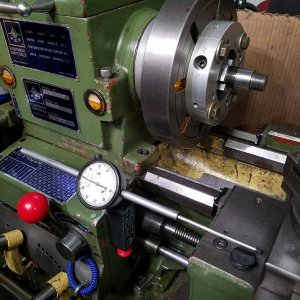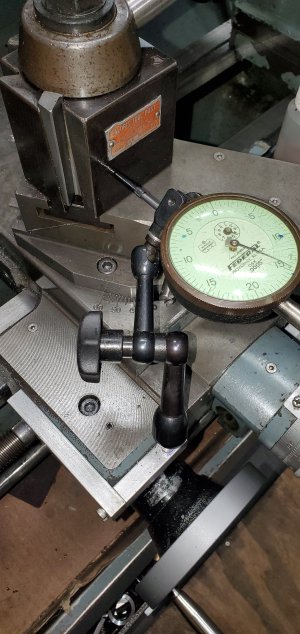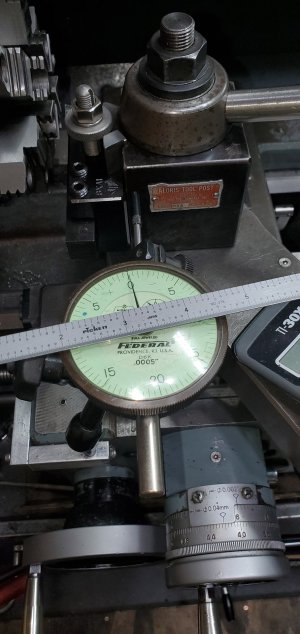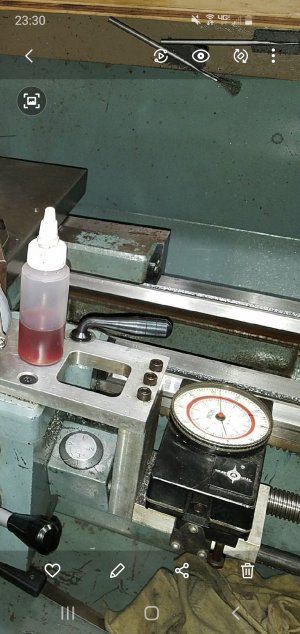- Joined
- Jul 13, 2014
- Messages
- 1,051
This 3 inch Starrett dial indicator got me through a lot of barrels

And this on the 1236, pointer on the QCTP I can dial to the resolution of the indicator. The trick to make sure there are no errors due to the indicator not squared up, make some small cuts and measure to ensure what you dial is what you got. Once the calibration sort of is verified then you can go on with the rest of the turning job. Done countless barrel for the gas blocks and hit dimensions spot on with this set up



And this on the 1236, pointer on the QCTP I can dial to the resolution of the indicator. The trick to make sure there are no errors due to the indicator not squared up, make some small cuts and measure to ensure what you dial is what you got. Once the calibration sort of is verified then you can go on with the rest of the turning job. Done countless barrel for the gas blocks and hit dimensions spot on with this set up


Last edited:


